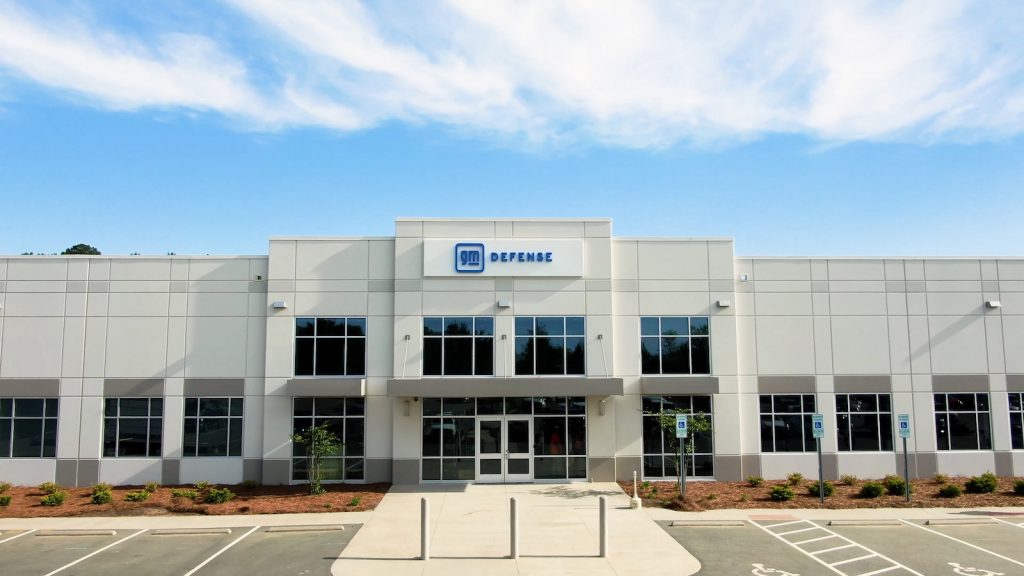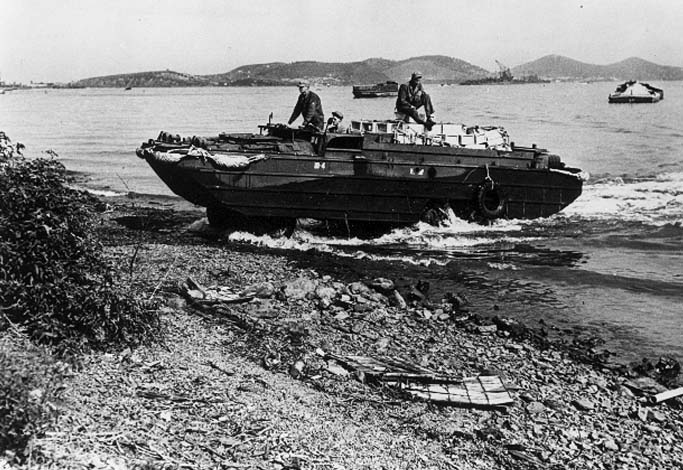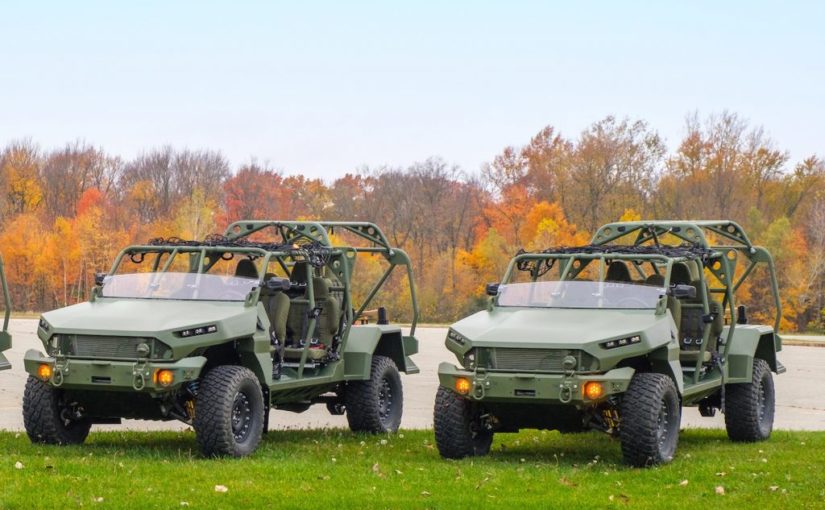GM Defense LLC announced Tuesday it appointed Steve DuMont its new president. DuMont joins the fully owned General Motors subsidiary after 13 years at Raytheon, as well as previous positions with BAE Systems and Boeing.

Prior to that, DuMont served as an aviation officer and attack helicopter pilot in the U.S. Army. He replaces Tim Herrick, who served as interim president.
“I wanted to continue my career with an organization that can provide solutions to address some of the toughest problems that our defense customers are facing, and GM Defense is doing just that,” DuMont said in a statement.
The move comes as GM opens its new manufacturing plant in Concord, North Carolina, just 120 days after landing a $214.3 million U.S. Army contract to build 2,065 vehicles for Infantry Brigade Combat Teams. It’s the first major contract the subsidiary has won since being formed in 2017.
GM was able to come up to speed quickly because it renovated an existing GM facility, rather than building from scratch. The newly renovated 75,000-square-foot plant includes some the latest manufacturing tools to meet U.S. Army requirements.
What they’re building there
GM wants to prove to the government its passenger vehicle technology can be used for military applications.
So, the new production facility will build the Infantry Squad Vehicle, or ISV, an all-terrain troop carrier designed to transport a nine-soldier infantry squad. It’s based on the 2020 Chevrolet Colorado ZR2 and ZR2 Bison midsize pickup truck architecture, constructed using 90% off-the-shelf parts, including Chevrolet Performance race components such as long-travel Multimatic DSSV dampers, long-travel rear leaf springs, jounce shocks, front upper control arms, steel driveshaft, underbody skid plates and ball-spline half shafts.

The ISV’s Concord production site is near Hendrick Motorsports, which is no accident. For GM, North Carolina-based Hendrick Motorsports’ experience in developing race cars for high-risk environments was ideal for use in defense. Unsurprisingly Henricks supplies the ISV’s chrome-moly steel exoskeleton vehicle frame, and GM Defense-designed rollover protection system.
Power comes from a tried-and-true driveline, GM’s 2.8-liter Duramax turbo-diesel engine and 6-speed automatic transmission, rated at 186 horsepower and 369 pound-feet of torque. As expected, the GM Autotrac 2-speed transfer case is fitted, with a 2.62 low range.
Despite the ISV’s 5,000-pound weight, GM says it’s light enough to suspend loaded from a UH-60 Blackhawk helicopter and compact enough to fit inside a CH-47 Chinook helicopter for air transport, both Army requirements.
Just the start for GM Defense
GM Defense was already working with the U.S. Army CCDC Ground Vehicle Systems Center to improve automotive cybersecurity. Jeff Ryder, GM Defense vice president of growth and strategy, previously told CNBC that GM sees a $25 billion market in creating products for the military using GM’s existing vehicles, parts and technology.

One example is GM’s newest electronic architecture, which supports 5G data transmission, over-the-air software updates and secure data exchange to support fleet management and predictive maintenance. Onboard ethernet supports 10 gigabits/second data rates that could handle anything from driver assistance systems to fully autonomous driving.
So, as GM invests in autonomous driving systems such as Super Cruise, the company sees a role for it at GM Defense, where it was employed in the Silent Utility Rover Universal Superstructure concept, or SURUS. Developed for future military vehicle applications and powered by a hydrogen fuel-cell, it uses what GM calls “Leader-Follower” technology that enables a single driver to manage a convoy from the lead vehicle with autonomous vehicles following, tracking the lead vehicle’s every move.
As for the platform itself, it’s a heavy-duty truck frame driven by two electric motors with a hydrogen storage system capable of more than 400 miles of range.
Going forward, GM Defense is considering what it will take to win the new contract to build the Joint Light Tactical Vehicle or JLTV, the newest version of the High Mobility Multipurpose Wheeled Vehicle, or Humvee. The Army’s request for proposal is due in February 2022, with the contract to be awarded in September.
A new beginning for an old idea
This is far from GM’s first foray into government contracting.

In 1914, 90% of GM’s truck production was directed toward war manufacturing; more than 8,500 trucks went to the front. During World War II, more than 100 GM plants produced tanks and weapons for the war effort, totaling $12.3 billion.
One, the DUKW amphibious landing craft, was considered one of the most valuable pieces of equipment produced by the United States during the war by General Dwight D. Eisenhower. Featuring 6-wheel drive, the “Duck” as it was nicknamed, was powered by a 4.4-liter 6-cylinder engine and a 10-speed transmission.
Later, during the Korean War, GM manufactures J65 Turbo Jet aircraft engines, 8.46 million bazooka shells and 5,431 anti-aircraft guns. Come the 1960s, GM manufactures 20mm automatic anti-aircraft guns and was the largest producer of M-16 rifles, with more than 469,000 built. More recently, in the 1980s, they build more than 70,000 Commercial Utility Cargo Vehicles, or CUCV, which are militarized renditions of the Chevrolet Blazer and Silverado.
But in 2003, in effort to pare down a $23 billion unfunded pension liability and strengthen its balance sheet, GM sold its defense unit to General Dynamics Corp. for $1.1 billion at a time when the worldwide market for military vehicles was expanding. Viewed as a non-core asset, the unit generated $965 million in revenue for GM in 2002.
With its new subsidiary, GM is looking to put that mistake behind them. “The company has the ability to disrupt the industry by bringing significant commercial innovation forward,” DuMont said, adding, “I’m truly excited to lead this team at such an important time for our defense.”
